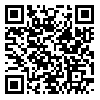مجله رویش روانشناسی از دادن گواهیهای کاغذی معذور است. لطفا تقاضا نکنید. همه گواهی ها در صفحه شخصی کاربران موجود است.
year 14, Issue 1 (Spring 2025 2025)
Rooyesh 2025, 14(1): 21-30 |
Back to browse issues page
Download citation:
BibTeX | RIS | EndNote | Medlars | ProCite | Reference Manager | RefWorks
Send citation to:



BibTeX | RIS | EndNote | Medlars | ProCite | Reference Manager | RefWorks
Send citation to:
Rezaei M, Mohammadi M, Samadieh H. (2025). Comparison of adaptive-maladaptive emotional schemas and positive-negative emotion regulation in Iranian and Afghan students: Across-cultural study. Rooyesh. 14(1), 21-30.
URL: http://frooyesh.ir/article-1-5703-en.html
URL: http://frooyesh.ir/article-1-5703-en.html
1- Assistant Professor, Department of Psychology, Faculty of Educational Sciences and Psychology, University of Birjand, Birjand, Iran. , Mehdi.rezaei15@birjand.ac.ir
2- M.A. in Educational Psychology, Department of Psychology, University of Birjand, Birjand, Iran.
3- Assistant Professor, Department of Psychology, Faculty of Educational Sciences and Psychology, University of Birjand, Birjand, Iran.
2- M.A. in Educational Psychology, Department of Psychology, University of Birjand, Birjand, Iran.
3- Assistant Professor, Department of Psychology, Faculty of Educational Sciences and Psychology, University of Birjand, Birjand, Iran.
Abstract: (1452 Views)
This study aimed to compare emotional schemas (adaptive-maladaptive) and emotion regulation strategies (positive-negative) between Iranian and Afghan students. The research method was a causal-comparative. The statistical population included all Iranian and Afghan students at the University of Birjand in the second semester of the academic year 2023-2024. Among them, 220 people (110 Iranian students and 110 Afghan students) were selected through the available sampling method. Research questionnaires included: The cognitive Emotion Regulation Questionnaire (CERQ; Garnefski et al., 2002) and the Leahy Emotional Schemas Scale (LESS; Leahy, 2002). Multivariate covariance analysis (MANCOVA) was also used to analyze the data. The findings showed that there is a significant difference between the two groups in maladaptive emotional schemas (uncontrollability, rationalism, and rumination) and negative emotion regulation strategies (blaming and catastrophizing) (p<0.001). These results show that emotional schemas and emotional regulation are socio-cultural and are formed in different ways as a result of complex social, historical, linguistic, and psychological interactions in different cultures.
Type of Article: Research |
Subject:
General Psychology
Received: 2024/10/2 | Accepted: 2024/11/2 | ePublished: 2025/04/22
Received: 2024/10/2 | Accepted: 2024/11/2 | ePublished: 2025/04/22
Send email to the article author
| Rights and permissions | |
 |
This work is licensed under a Creative Commons Attribution-NonCommercial 4.0 International License. |





